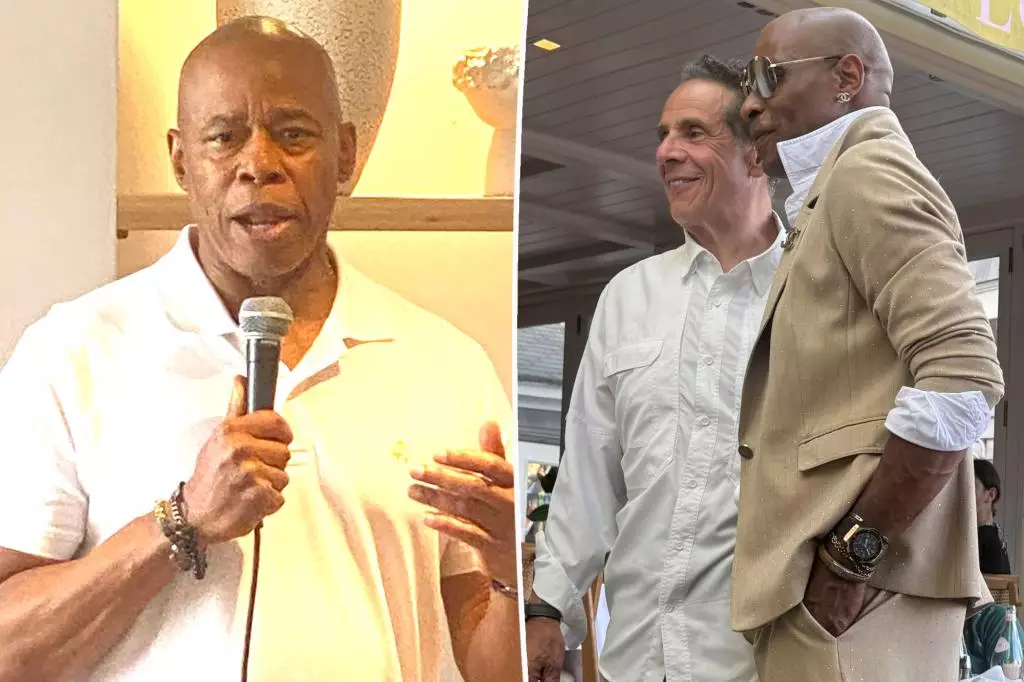The Hamptons, traditionally synonymous with luxury, leisure, and escape from urban chaos, has evolved into an unexpectedly charged political arena. Recent weekends highlight this transformation, where elite social gatherings are becoming strategic stages for influence and ambition, revealing a city’s fiercely contested future. Amidst sprawling estates and high-end dining, political figures like Eric Adams and Andrew Cuomo are leveraging the opulence of the East End to project strength, settle scores, and potentially reshape New York’s political landscape.
The significance of the Hamptons in this context extends beyond mere prestige. It embodies a symbolic battleground where narratives of leadership, identity, and power are crafted under the guise of casual elegance. For Adams, it’s an opportunity to rally supporters, reinforce his tough-on-crime message, and fend off political challenges. For Cuomo, it’s an arena to remain relevant, test the waters for a potential comeback, and reconnect with influential insiders. These gatherings serve as modern-day political salons, where conversations shift from small talk to strategic positioning amidst the backdrop of summer opulence.
Eric Adams: Harnessing Resilience and Confrontation in a Changing City
Mayor Eric Adams’s appearances in the Hamptons underscore his desire to portray himself as a resilient leader committed to safeguarding New York. His strategic attendance at the Friday and Saturday events allows him to resonate with the region’s powerful elites, who often influence city politics. Adams’s speech at the “Hamptons Business Power Breakfast” was not just about fundraising; it was a pointed declaration that he intends to fight through adversity, rallying support by invoking legendary hockey icon Wayne Gretzky.
Adams’s use of Gretzky’s story about perseverance in adversity amplifies his narrative of toughness, echoing his own tumultuous tenure marked by scandals and political headwinds. His emphasis on “keeping New York safe” and fighting “far-left ideologies” suggests a defensive stance—one that attempts to rally voters around the idea that he is actively resisting divisive forces threatening the city’s stability and prosperity. The anecdote about Gretzky entering the opponent’s locker room, battered and weary yet undeterred, resonates with Adams’s messaging: a call to endure, to fight for victory despite setbacks.
Furthermore, Adams’s comments criticizing Democratic mayoral candidate Zohran Mamdani reveal a strategic effort to frame the upcoming election as a battle between pragmatic leadership and ideological extremism. By dismissing Mamdani’s proposals and highlighting the need for multilevel political support to implement tax hikes, Adams emphasizes the importance of political pragmatism over populist promises. His act of personally thanking restaurant staff symbolizes his effort to showcase humility and community connection—yet, the underlying hunger for victory remains evident.
Andrew Cuomo’s Silent Return and the Quest for Relevance
While Adams is actively campaigning, Cuomo’s quiet but persistent presence in the Hamptons hints at a different approach—one of lurking influence rather than loud declaration. His weekend visits, including attending a birthday bash hosted by political insiders like Lally Weymouth, suggest he is warming up to the idea of a mayoral bid, even if he publicly remains noncommittal. Cuomo’s previous loss in the Democratic primary was a blow, but his longstanding political network and name recognition remain potent assets that he clearly intends to leverage.
The recent polling indicating Cuomo trailing Adams by significant margins did little to dampen his confidence. Instead, it appears to fuel his strategic patience—waiting for the right moment to re-enter the race, possibly capitalizing on discontent within the Democratic establishment. Cuomo’s visits to various boroughs, including the Bronx and Brooklyn, hint at a grassroots effort to gauge voter sentiment and rebuild support. His presence at high-profile social events, alongside other political veterans, positions him as a serious contender who refuses to fade quietly into the background.
The ongoing speculation about Cuomo’s mayoral ambitions reflects a broader narrative: a city still divided on leadership, identity, and the future. For Cuomo, the Hamptons serve as both a sanctuary for social connection and a strategic vantage point from which to plot a potential comeback. His engagement with influential donors and insiders indicates a quiet, calculated effort to stay relevant, even if he isn’t yet ready to formally announce.
A Cultural and Political Ecosystem of Wealth and Influence
The gathering at the Fishels’ estate, which hosted a Tunnel to Towers gala honoring veterans and first responders, exemplifies how philanthropy and politics intersect in the Hamptons. Such events serve dual purposes: they raise funds while also cementing social bonds with key opinion leaders and powerbrokers. The involvement of figures like Suffolk County legislator Chad Lennon—a Purple Heart recipient—underscores the importance of patriotic messaging in this social-political ecosystem.
Moreover, the extravagance on display, such as tables costing tens of thousands of dollars during July Fourth parades, highlights the socio-economic divide that underpins Manhattan’s politics. These elite gatherings are more than superficial displays—they are strategic venues for networking, fundraising, and reinforcing alliances that influence policy decisions at the city and statewide levels.
The Hamptons effectively functions as a political chessboard where wealth, influence, and ambition converge. It is a place where the narratives of resilience, control, and relevance are crafted amidst a backdrop of opulence. Whether Adams’s fiery campaign speeches or Cuomo’s silent but strategic presence, both are navigating a landscape shaped increasingly by wealth-driven power dynamics and contentious political identities.
In the end, the Hamptons’ return to the political stage signals a broader truth: New York’s future will be decided not just in city halls and legislative chambers, but also in the luxurious enclaves where the city’s most influential dwell. The game is on, and every handshake, speech, and social event will shape the city’s destiny in ways that are as intricate as they are high-stakes.

